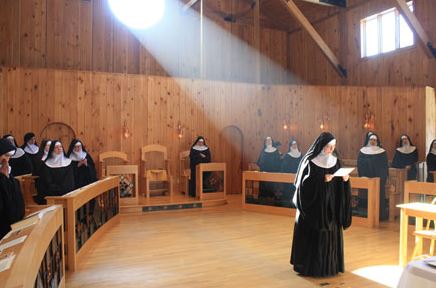An abbess is a key figure in monastic communities, particularly within the Christian tradition. This article explores the role of an abbess, including her historical significance, responsibilities, and impact on religious communities.
What is an Abbess?
An abbess is the female head of a convent or abbey in various Christian monastic traditions. She is responsible for overseeing the spiritual and administrative aspects of the community and providing leadership to the nuns under her care.
- Historical Context: The term “abbess” derives from the Latin word “abbas,” meaning “father” or “abbot,” adapted for female leaders. Historically, abbesses have played significant roles in the development and governance of monastic communities.
- Distinction from Abbot: While an abbot is the male head of a monastery, an abbess holds a similar position in a convent. Both roles involve spiritual and administrative leadership, but the abbess specifically leads a community of nuns.
Historical Significance of Abbesses
Abbesses have played crucial roles in the history of Christianity, particularly during the medieval period:
- Early Church: In the early Christian church, women led communities of religious women, but formal titles like “abbess” became more established in the medieval period.
- Medieval Period: During the medieval period, abbesses were influential in managing large convents and abbeys. They were often involved in local and regional politics and played a significant role in education and charity work.
- Reformation and Beyond: The Reformation led to significant changes in monastic life, with many convents disbanding. However, the role of abbesses continued in some areas, adapting to new religious and social contexts.

Responsibilities of an Abbess
An abbess has a range of responsibilities, combining spiritual leadership with administrative duties:
- Spiritual Leadership: The abbess provides spiritual guidance to the members of her community, ensuring that the convent or abbey adheres to its religious practices and principles. She leads prayers, administers sacraments, and offers pastoral care.
- Administrative Duties: The abbess is responsible for the day-to-day management of the convent or abbey. This includes overseeing the financial management, property maintenance, and staffing. She ensures that the community’s needs are met and that the convent operates smoothly.
- Educational Role: In many historical contexts, abbesses were involved in education, particularly in teaching young women and running schools or hospitals associated with their convents. This role extended to cultural and intellectual development within the community.
- External Relations: The abbess often represents the convent or abbey in external affairs. This can include dealings with local authorities, other religious communities, and benefactors. She may also be involved in broader church or community activities.
The Impact of Abbesses on Monastic Life
Abbesses have significantly shaped the character and activities of monastic communities:
- Community Life: The abbess’s leadership style and decisions directly impact the daily life and spiritual well-being of the nuns. Her role in maintaining harmony and discipline within the community is crucial.
- Cultural Contributions: Throughout history, abbesses have contributed to the cultural and intellectual life of their communities. They have been patrons of the arts, sponsors of scholarship, and preservers of religious traditions.
- Social Influence: Abbesses have often been influential figures in their regions, contributing to social welfare and local governance. Their leadership extended beyond the convent walls, impacting broader societal issues.
Modern Context and Adaptations
In contemporary times, the role of an abbess continues to evolve, reflecting changes in religious life and societal norms:
- Contemporary Leadership: Modern abbesses may face different challenges than their historical counterparts, including adapting to changes in church structure, addressing contemporary social issues, and managing diverse and global communities.
- Interfaith and Ecumenical Work: Many abbesses are involved in interfaith dialogue and ecumenical efforts, fostering cooperation and understanding between different religious traditions and denominations.
- Focus on Community Service: In addition to traditional roles, many modern abbesses emphasize community service and outreach, addressing contemporary social issues such as poverty, education, and healthcare.
How to Become an Abbess
Becoming an abbess typically involves a significant commitment to religious life and leadership:
- Religious Vocation: To become an abbess, a woman generally begins her journey as a novice or nun within a religious community. This involves years of spiritual formation and service.
- Selection Process: The selection process for an abbess varies by religious order. It often involves nominations by fellow nuns and approval by higher church authorities. The chosen abbess must demonstrate strong leadership, spiritual depth, and administrative skills.
- Training and Experience: Candidates for the role of abbess usually undergo extensive training and gain experience in various aspects of monastic life and governance before being appointed to the role.
The Legacy of Abbesses
Abbesses have played a vital role in the history and development of Christian monasticism. Their leadership, dedication, and contributions have shaped the spiritual and cultural life of their communities. Understanding the role of an abbess provides insight into the rich tradition of monastic leadership and the ongoing evolution of religious life.
Whether in historical contexts or contemporary settings, abbesses continue to influence religious communities and society at large through their commitment to spiritual leadership and service.




